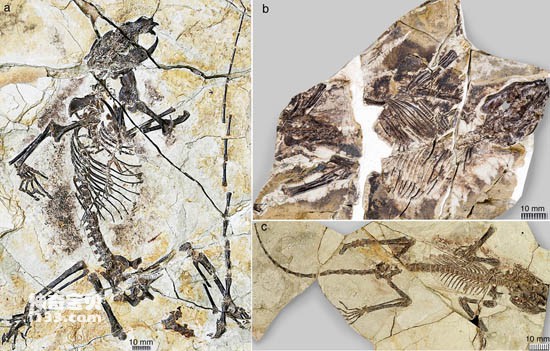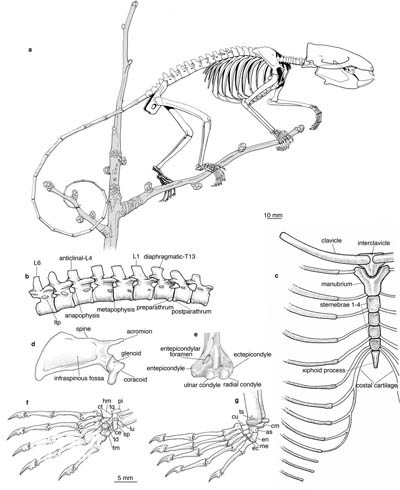China has discovered six quite complete mammal fossils dating to 160 million years ago; and named three new species in two new genera of mythical beasts and fairy beasts, namely Shenshoului (Lu's mythical beast) and Xianshoulinglong (Linglong). Xianshousongae) and Xianshousongae (Song family fairy beasts). These genera and species all belong to the extinct "Cryotheria", a special, so far poorly known group of Mesozoic mammals. Research shows that mammals originated in the late Triassic period at least 208 million years ago. This article is a special introduction paper in the current issue of Nature.

160-million-year-old thief beast fossil
The origin of mammals is an important scientific issue in evolutionary biology and a hot topic of long-term debate in the academic community. In August 2013, "Nature" published two studies from the Jurassic of China in the same period. They reported on the tree thieves and the mammalian megalodon respectively. Both studies were related to thieves. However, the conclusions reached by these two independent studies are quite different on the phylogeny and origin time of mammals, and the focus is on the phylogenetic position of thieves. One study believes that the thieves are outside the crown group of mammals and belong to the mammals. The true mammals, in an explosive form, appeared in the early Middle Jurassic (about 160 million years ago). evolved and developed. Another study believes that thieves and multituberculates form a sister group, and both belong to mammals; mammals appeared in an explosive evolutionary radiation in the late Triassic (208 million years ago). These two studies have made the discussion about the origin and evolution of mammals more heated.

Restored picture of the real thief beast (god and immortal beast from the Jurassic period in China)
Fossils of thieves first appeared in the Late Triassic, and there were reports about them in Darwin's time. The teeth of Thieves are similar to those of the most prosperous polydonts of the Mesozoic Era. They have a peculiar structure. The crown of the tooth has multiple cusps arranged in two rows vertically. The structure of the teeth is obviously different from that of other early and living mammals. However, in the past 170 years, the understanding of thieves has been almost limited to a single tooth, and there is a lack of complete specimens. Due to scattered and scarce materials, researchers have been unable to figure out for more than a hundred years what the thieves look like, whether they really belong to mammals, and even whether those single teeth come from the left or right dentition. There is also confusion. The discovery of the gods and immortal beasts allows us to finally have a clear understanding of this ancient and mysterious group of mammals. The research on them is based on 6 specimens collected by the Institute of Vertebrate Paleontology and Paleoanthropology of the Chinese Academy of Sciences, Hebei Tangshan Museum of Nature, Beijing Museum of Nature, Liaoning Jizantang Fossil Museum and Wuyishan Museum. They have preserved skulls and skeletons to varying degrees. , for the first time, the morphology of the thief beast was comprehensively demonstrated in terms of the skull, mandible, teeth and bones behind the head. The fossils of mythical beasts and fairy beasts are all produced in the Linglong Tower area of Jianchang, Liaoning Province. The age of the fossils is about 160 million years ago. In the same Nature article, three new mammal species were named after six specimens, which is probably the only one in the history of Nature.

Sketch of the skeleton and local features of a real thief beast (god, fairy beast)
The newly named gods and fairy beasts are all small mammals, ranging in size from small squirrels to house mice, and weighing about 40 to 300 grams. Although they still have some primitive characteristics, they show more typical mammalian characteristics, such as typical mammalian middle ear structures and dentary-temporal bone jaw joints, clearly differentiated thoracolumbar vertebrae, sternum, ribs, etc., indicating that they have The unique diaphragm in the chest cavity of mammals allows the animal to breathe during rapid movement. Their bones are slender, reflecting the basic structure of a dexterous animal. The most distinctive feature is that their hands and feet have short metacarpal bones and long finger (toe) bones, which are used to grasp branches, which is a typical adaptation feature of arboreal animals. A long tail that can be curled is also a characteristic of arboreal mammals. These characteristics indicate that mythical beasts and fairy beasts are flexible climbers and arborealists, and they will live in trees longer than living squirrels. In addition, like many Mesozoic mammals, they had venomous spines on their feet similar to those of the platypus. Their skulls, jaws, teeth and chewing methods indicate that their diet was mainly insects, nuts and fruits.
Based on the study of these specimens, researchers have clarified many controversial issues regarding the homology, positioning, and bite relationship of Euharamiyida's teeth, and established a new mammalian lineage - Euharamiyida, which is related to Euharamiyida. The multituberculates form a sister group. The researchers used strong arguments and simple phylogenetic relationships to show that the morphological similarities between thieves, multituberculates and other mammals are derived from homologous evolution rather than parallel evolution, providing a novel perspective on the early evolution of mammals. perspective and research window. In addition, based on the phylogenetic relationship, age and paleogeographic distribution of the earliest mammals and their close relatives, researchers believe that mammals may have originated from the land mass of Laurasia, were highly differentiated in the Early-Middle Jurassic, and evolved into The Mesozoic Era showed a global distribution.
animal tags:
We created this article in conjunction with AI technology, then made sure it was fact-checked and edited by a Animals Top editor.